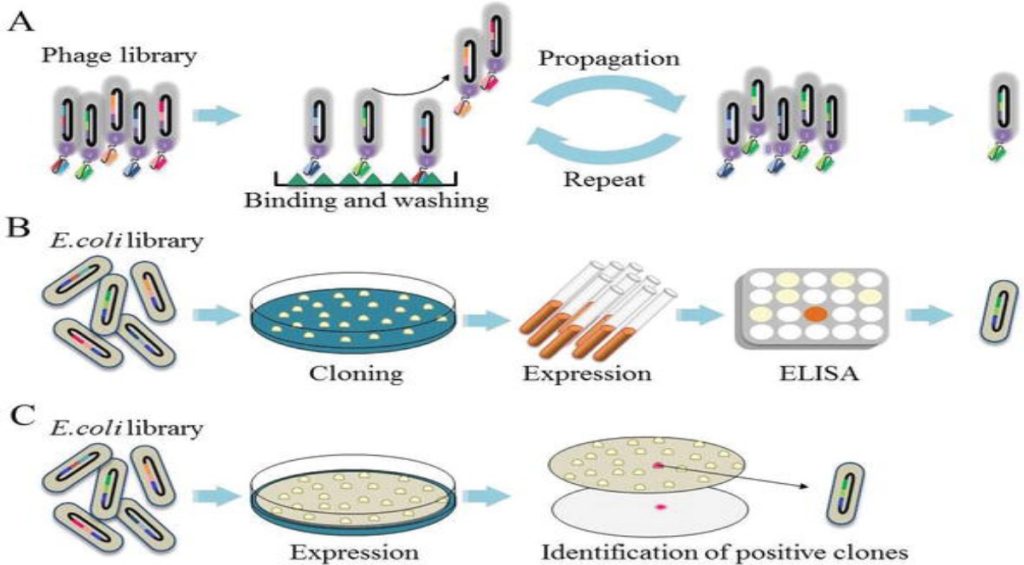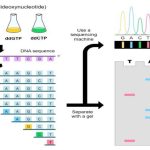The result of any cloning experiment that begins with total DNA from a specific source is a library of clones. Thus cloning mRNA through a cDNA intermediate generates a cDNA library that represents the mRNA from that specific developmental stage. In contrast, if you clone total human DNA for example into a lambda or cosmid vector, you obtain a genomic library that contains (with a probability of 95-99%) all the sequences from the human genome or DNA complement. Lambda or cosmid libraries are typically used for genomic libraries because you generally can clone an entire gene containing both the coding sequence and regulatory elements on a single clone.
One of the key elements required to identify a gene during cloning is a probe. A probe is normally a cloned piece of DNA that contains a portion of the sequence for which you are searching. You typically will make the probe radioactive and add it to a solution. Filters containing immobilized clones are then bathed in the solution. The principal behind this step is that the probe will bind to any clone containing sequences similar to those found on the probe. This binding step is called hybridization.
- Probe – a nucleic acid (usually DNA) that is complementary to a specific gene or nucleic acid sequence of interest; when a cDNA library is being screened an antibody can be used to identify the protein that is being expressed by the insert of the clone
- Homologous Probe – a probe that is exactly complementary to the nucleic acid sequence for which you are searching; ex., a human cDNA used to search a human genomic library
- Heterologous Probe – a probe that is similar to, but not exactly complementary to the nucleic acid sequence for which you are searching; ex., a mouse probe used to search a human genomic library
Screening a cDNA or Genomic Library
- immobilize members of the library onto a nylon membrane and denature them so that they are single-stranded
- prepare a radiolabelled probe and denature it to make it single-stranded
- hybridize the probe to the library of clones
- wash the excess probe and expose an X-ray film
- isolate the positive clone and analyze
The hybridization step is performed at a non-stringent temperature that ensures the probe will bind to any clone containing a similar sequence. At the same time some non-specific hybridization will occur because some of the clones will contain limited, but not significant similarity to the probe. The washing step is performed at a stringent temperature that is high enough to wash the probe off all clones to which it has bound in a non-specific manner. But it is important that the temperature is not so high that it washes the probe off of clones that contain sequences that are similar or identical to the probe itself. Therefore, consideration about the source of the probe (homologous or heterologus) determine the temperature at which the washing step is performed.



Comments are closed